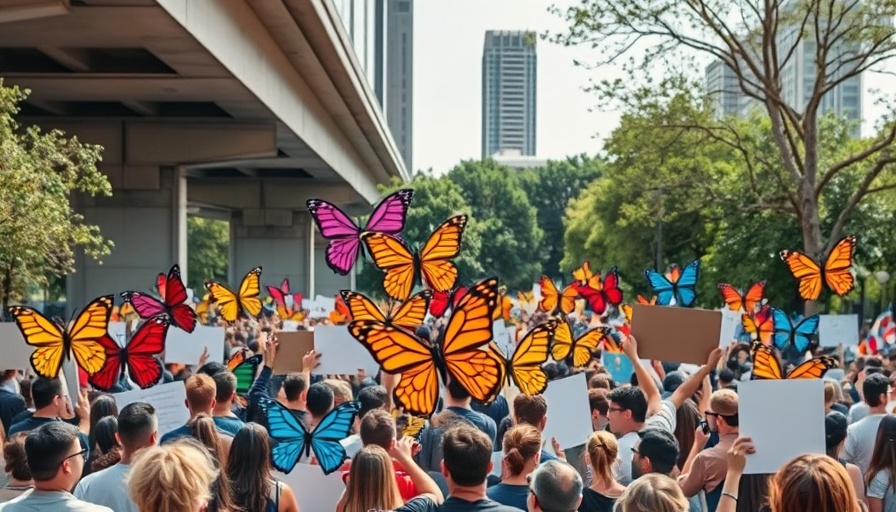
The Rising Tension Around Immigration in South San Diego
As immigration issues gain traction in Southern California, the ripple effects are palpably felt across South San Diego County, notably impacting the political climate ahead of the District 1 Supervisor election. Amid intensified immigration raids and President Trump’s military interventionist rhetoric against protests in Los Angeles, South County residents have found themselves in heated discussions about the implications for their community.
Christine Brady, a Chula Vista resident, voices a concern shared among many: "We’re all talking about this. The community in general is absolutely horrified by what’s going on." This sentiment intensified after a May 30 raid on two restaurants in South Park, demonstrating how such federal actions reverberate throughout the region, often igniting protests and unrest.
Local Leaders Respond to a National Debate
In this politically charged atmosphere, candidates in the Supervisor race are taking noticeably different stances on immigration. Paloma Aguirre, the Democrat running for the District 1 Supervisor seat, has seized the issue to resonate with a worried electorate. Following her statement condemning the raid, she participated in social gatherings near the targeted locations, aligning herself with immigrants and their advocate communities.
In contrast, her Republican opponent, Chula Vista Mayor John McCann, opted for a more calculated approach by sidestepping the topic. Instead, he has focused on pressing local matters such as budgeting and housing. Political scientists suggest that McCann's strategy illustrates a broader Republican hesitancy to address hot-button immigration issues directly, potentially alienating constituents versus rallying support through a staunch position.
Immigration's Inextricable Link to Local Life
In District 1, the socio-economic fabric is tightly woven with immigrant expectations and realities. Approximately one-third of South County residents were born outside the United States, according to U.S. Census data. This demographic reality underscores the value of cross-border trade, contributing $70 billion to San Diego's economy.
Chula Vista City Councilmember Michael Inzunza recently emphasized this point, stating, "You’re talking about people who want the same American dreams we do." His comments reflect a broader acknowledgment of the indispensable role that immigrants play in sustaining local industries, including hospitality, maintenance, and childcare.
Fears and Misinformation Amplify Community Anxiety
The noxious combination of federal raids and misinformation has added to the fear among immigrant communities. Michelle Celleri, from the nonprofit Alliance San Diego, notes that the recent withdrawal of certain legal protections under the Trump administration has left many seeking asylum in a precarious position. Celleri highlights that rumors proliferate rapidly, impacting crucial social services—last week, an unfounded post warned against attending church under the pretext of an impending ICE raid.
“It didn’t happen but a lot of the parishioners were scared,” Celleri says, showcasing how fear can operate as a self-fulfilling prophecy when inaccurate information begs a response.
A Complex Future for Immigration Policy
As the prospect of the District 1 Supervisor election looms nearer, candidates and residents alike are challenged to confront the often painful complexities of immigration policy. While County governments lack the authority to directly intervene in federal enforcement, local sanctuary policies emerge as a vital response. These policies offer sanctuary to some immigrants while illustrating the tensions between community needs and federal expectations.
The upcoming election might reflect deeper societal shifts, notably as more citizens recognize that all individuals—immigrant or native—share a stake in the well-being of their community. Understanding the dynamics at play will arm San Diego residents with the knowledge necessary to engage constructively in the political discourse and advocate for their collective future.
Engagement: Your Voice Matters
In light of these developments, San Diego residents are encouraged to participate in discussions regarding local policies impacting immigration and community well-being. Engaging in open dialogues ensures that all perspectives are represented and considered during the upcoming election and beyond. Whether through voting, attending local gatherings, or voicing concerns on social media, your input is valuable.
 Add Row
Add Row  Add
Add 




 Add Row
Add Row  Add
Add 

Write A Comment